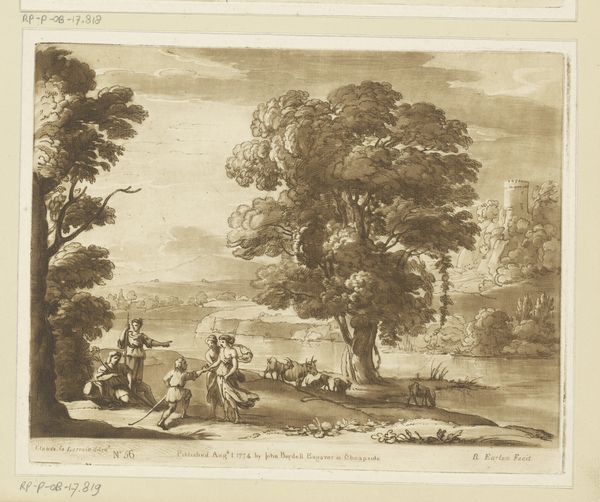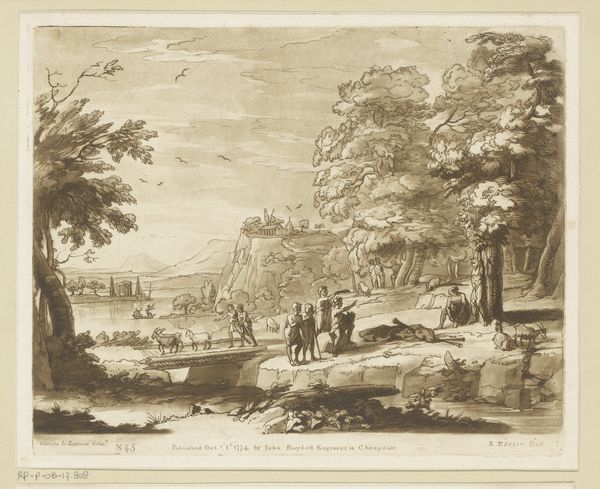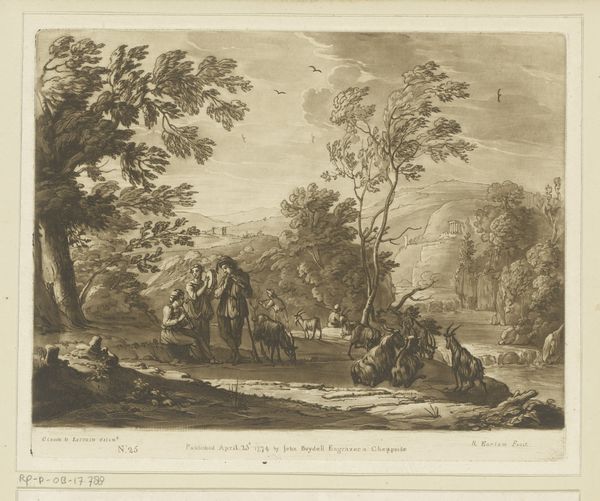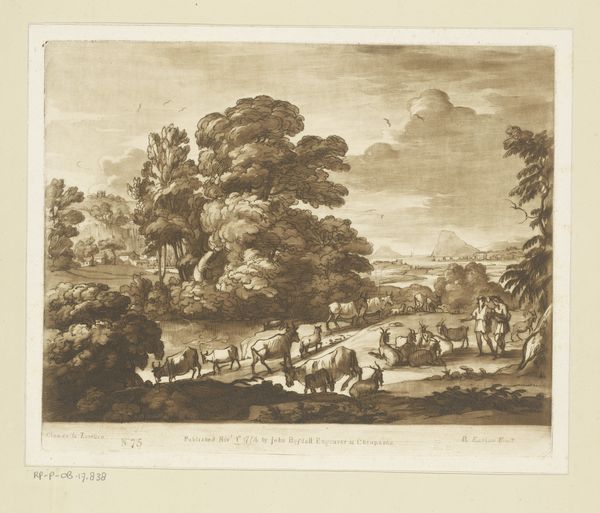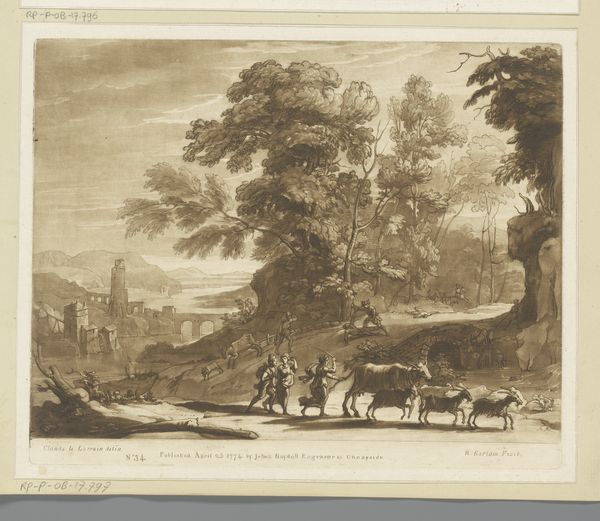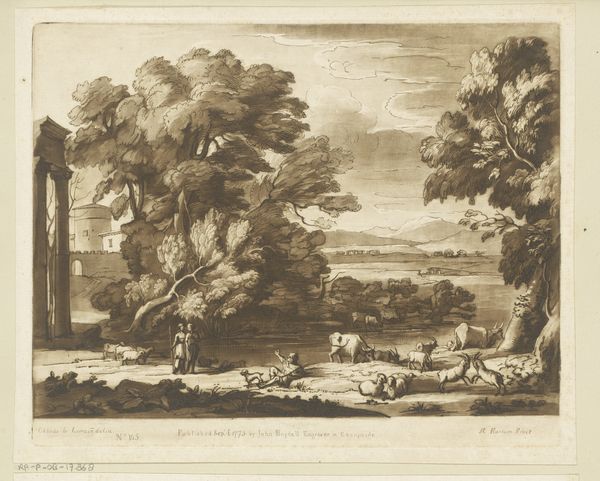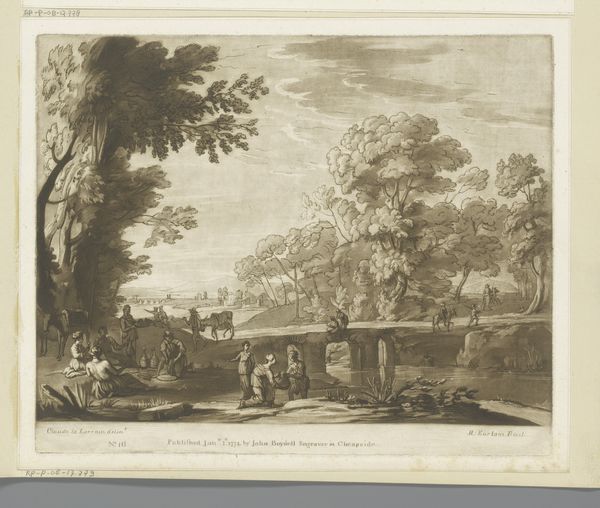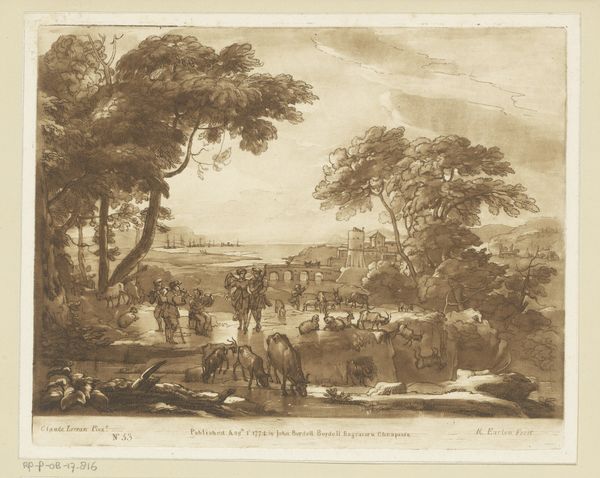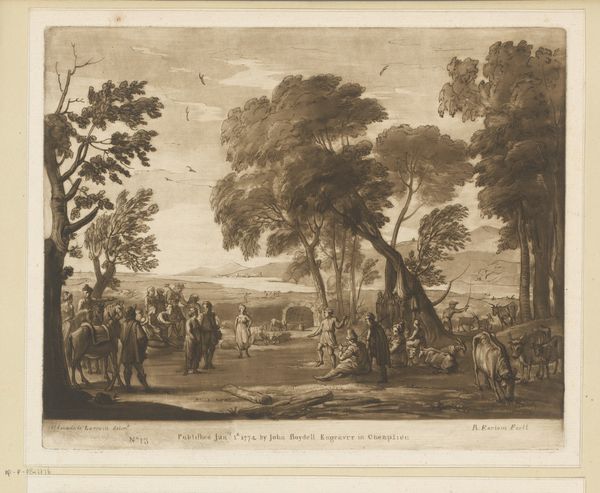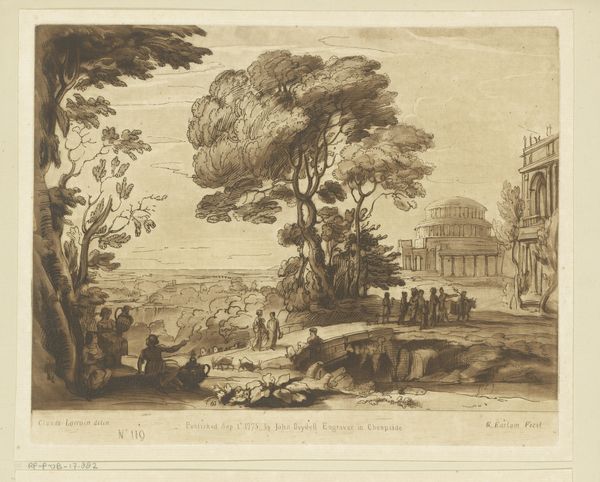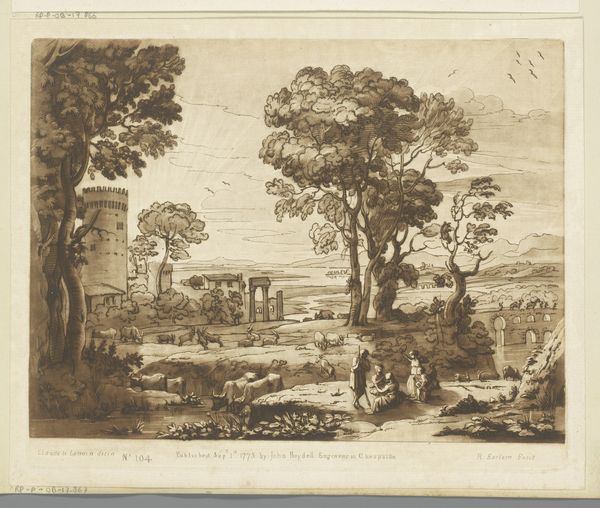
Landschap met vee, visser en vlucht naar Egypte Possibly 1774 - 1778
0:00
0:00
richardearlom
Rijksmuseum
print, etching, engraving
#
neoclacissism
# print
#
etching
#
old engraving style
#
landscape
#
river
#
genre-painting
#
engraving
Dimensions: height 206 mm, width 256 mm
Copyright: Rijks Museum: Open Domain
Editor: So, this is "Landschap met vee, visser en vlucht naar Egypte," potentially from 1774 to 1778, an etching and engraving by Richard Earlom. The scene is tranquil; it makes me think of an idealized past. How do you interpret this work through a contemporary lens? Curator: The composition, with its crumbling classical architecture juxtaposed with the "natural" landscape, screams of Neoclassicism's obsession with the past. However, what’s missing is an interrogation of *whose* past is being idealized and at whose expense. It depicts rural idyll, but what does that ideal omit? Think about the realities of labour and the social hierarchies of the time. Does it depict colonial structures implicitly by way of contrast? Editor: I hadn't considered that. I was so focused on the aesthetic qualities. The peasants look content... or at least, not explicitly suffering. Curator: Exactly! The “Flights to Egypt” were rarely ever peaceful, and in addition to religious persecution, they suffered displacement, erasure of identity and theft of land. Consider how landscape art during this period, often commissioned by the wealthy, romanticized rural life while glossing over the socio-political struggles inherent in that same environment. What does "landscape" mean here, when there is no acknowledgement of the true social context that is never represented? Editor: So, this idealized view maybe unintentionally reinforces existing power dynamics? Curator: Precisely! The beauty and serenity become a kind of smokescreen, obscuring a more complex and uncomfortable truth. Think about the "genre-painting" tag – what stories are *not* being told when we categorise artworks in that manner? Editor: That definitely shifts my understanding. The piece feels less innocent now. Thanks for this different interpretation! Curator: My pleasure. Looking at art through a critical, intersectional lens allows us to unpack its complexities and its continued relevance to today's conversations.
Comments
No comments
Be the first to comment and join the conversation on the ultimate creative platform.
